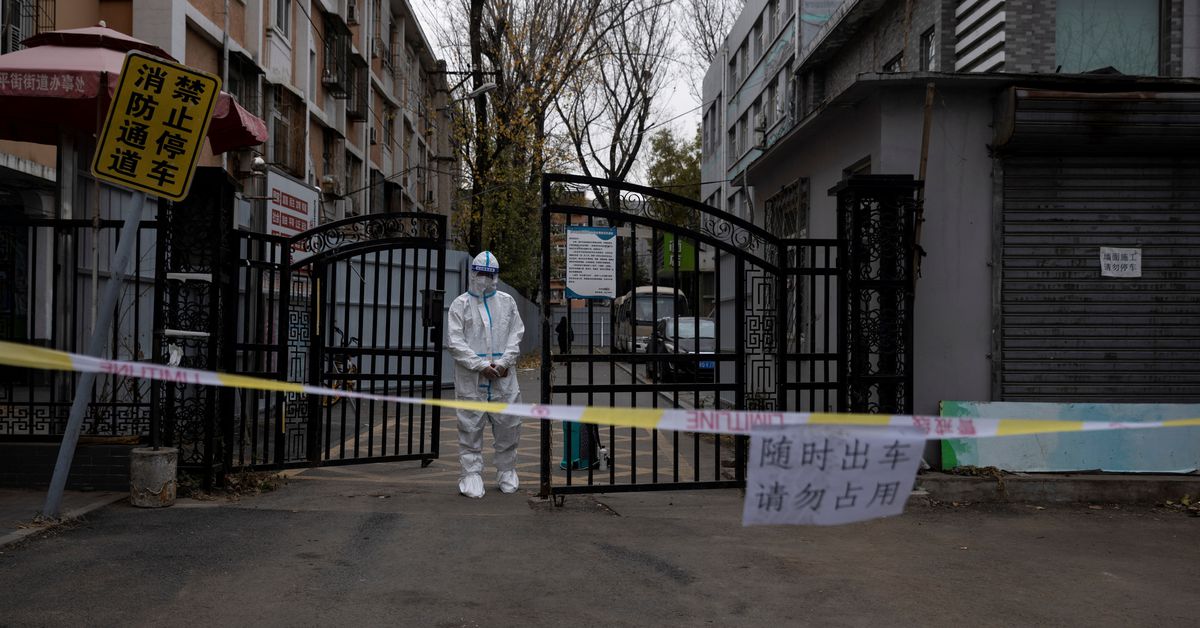Removed by mod
Oh, while we are collecting failures, going from “the entire city is in home-prision, we will incompetently handle the fundamental needs like food and water” directly into “whatever! you can kill yourselves for all that I care!” without any hint of even looking into a reasonable policy looks like a huge failure all by itself.
Any country that tried to help its people fared better. That’s by necessity, because those policies weren’t made for that.
While I can’t question the numbers from the article, it’s completely missing the major point:
As someone living in China, it was very obvious that covid zero had ultimately failed when Omnicron and its mutations hit the mainland. They could spread faster than a 72-48h detection window (mandatory testing rhythm depending on the city) could detect new infections to isolate people.
Consequently, the reporting of new infections was stopped for about a week (thought testing continued) and then literally over night all testing booths, QR code apps and associated infrastructure disappeared completely from malls, office buildings, restaurants and whatnot.
The day after about 40% of my office were infected (either showing symptoms or reported a positive self-test), the next day another 30%, and by the end of the week we were all sick. And this is not merely anecdotal evidence, about the same spread pattern was observed in most larger cities. This could under no circumstances have happened if the virus hadn’t already spread far and wide, and merely the reporting had ceased so people were left in the dark.
Curbing the covid zero policy was the result of a spread beyond containment, not the root cause thereof.
It failed because the CCP didn’t spend the time gained by the strategy to vaccinate the whole population. They would have had plenty of time for that until Omicron hit.
In an unvaccinated workplace, a single infected person can easily infect everybody in a single day. In my country, by that time everybody already was either vaccinated or recovered (or dead), so it only hit half of the people (I was one of the ones who got it back then btw).
In my company everyone was vaccinated, but with the local juice. Fairly inefficient, and they knew it. But rather than approving mRNA vaccines for the local market, they played protectionist, as always.
I was lucky enough to have had a business trip to Germany a few months back where I got myself a Biontech booster. Consequently I had super mild symptoms (tired as fuck and fever .4 out of the normal range) and already fully recovered on the afternoon of day 2, while most of my colleagues where bedbound for 3-7 days. Unless some of them simulated and enjoyed a casual break…
Yeah, from what I gathered, the Chinese vaccination wasn’t much better than a placebo, especially with the rapidly evolving variants. This didn’t help at all.
Apparently that thing spread fast. Say one person goes to a meeting at a different company, get infected, comes back to the office, he can infect the entire office by noon. Who someone else can carry to a different company in the afternoon, etc. Any public transportation and it’s all over.
once again China government favors appearances over actually fixing things
It’s almost as if the rush to end COVID protections in order to protect corporate profits was a bad idea.
As sad and sobering as this is, it does mean their very strict quarantine was effective in delaying the deaths of 2M people for 2-3 years.
That’s 75,000 lives* worth of time saved. (80 years per life estimate)
deleted by creator
They probably saved many more lives than that. They largely bypassed the Delta variant, which I think was the most murderous Covid wave globally.
This is the best summary I could come up with:
BEIJING, Aug 25 (Reuters) - China’s abrupt move to dismantle its strict COVID-19 regime, which unleashed the virus onto its 1.4 billion residents, could have led to nearly 2 million excess deaths in the following two months, a new U.S. study shows.
It found an estimated 1.87 million excess deaths from all causes occurred among people over 30 years of age between December 2022 and January 2023, and were observed in all provinces in mainland China except Tibet.
China’s decision last December to end the three-year zero-COVID policy, which included mass-testing and stringent and persistent quarantine lockdowns, led to a massive surge in hospitalisations and deaths that health experts say were largely unreported by the government.
The study, published on Thursday in JAMA Network Open, said the number of excess deaths far exceeded official Chinese government estimates in January that 60,000 people with COVID-19 had died in hospital since the zero-COVID policy was abandoned a month earlier.
Global health experts repeatedly called on China to reveal more data as reports of rising hospitalisations and deaths started to surface, and especially as the threat of new variants became a concern.
“The National Bureau of Disease Control and Prevention said the proportion of the new variant EG.5 increased from 0.6% in April to 71.6% in August, becoming the dominant strain in most provinces in China,” the Global Times reported.
The original article contains 475 words, the summary contains 227 words. Saved 52%. I’m a bot and I’m open source!





